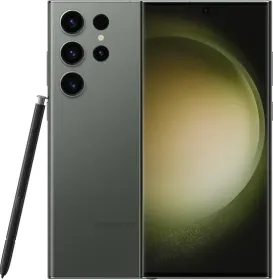Samsung’s highly anticipated flagship series, the Galaxy S26, has undergone a significant and unexpected structural change. Previously expected to launch with three models, the Galaxy S26 Pro, Galaxy S26 Edge, and Galaxy S26 Ultra, the company decided to cancel the Galaxy S26 Edge due to the low sales performance of slim models like the iPhone Air and the Galaxy S25 Edge. Following this cancellation, Samsung rebranded the series, choosing to bring back the Galaxy S26 Plus.
After this restructuring, the base model, initially referred to as the Galaxy S26 Pro but now simply the Galaxy S26, and the Galaxy S26 Plus (previously spotted in the IMEI database with model number SM-S947), have had their critical camera and battery specifications revealed through detailed software analysis.
Strategic Camera Configuration for Galaxy S26 / S26 Plus: 50 MP + 12 MP + 12 MP
We had reported earlier that Samsung was testing various camera sensors for the Galaxy S26 series, with no conclusive decision taken. The cancellation of the Galaxy S26 Edge launch required a shift in strategy. Samsung has now dropped plans for using the 50MP Samsung ISOCELL S5KJN3 Ultra Wide camera sensor in the Galaxy S26 and Galaxy S26 Plus variants.

The camera configurations based on the latest firmwares (Galaxy S26: S942BXXU0AYK9/S942BOXM0AYK9/S942BXXU0AYK9 and Galaxy S26 Plus: S947BXXU0AYK9/S947BOXM0AYK9/S947BXXU0AYK9)
| Camera Type | Resolution | Sensor Model | Status |
| Main Camera (Wide) | 50MP | Samsung ISOCELL S5KGNG | New Sensor |
| Ultra Wide Angle | 12MP | Sony IMX564 | Old Sensor (Also used in previous S series) |
| Telephoto | 12MP | Samsung ISOCELL S5K3LD | New Sensor |
The firmware data reveals another important improvement. Samsung is finally abandoning the 10MP Samsung ISOCELL S5K3K1 Telephoto camera used in the Samsung Galaxy S25 and S25+ models for a newer 12MP Samsung ISOCELL S5K3LD Telephoto camera. This is particularly important because it offers improved image quality due to higher image resolution.
However, one thing worth mentioning is that the decision has been made to retain the 12MP Sony IMX564 sensor in the Ultra Wide Angle camera, which was used in previous generations of the Samsung Galaxy S series. This is perhaps due to branding reasons:
- Standard resolution for flagship smartphones: By increasing the telephoto camera’s resolution to 12 MP, Samsung has ensured that the telephoto and ultra-wide-angle cameras on this device have a standard 12 MP resolution. Samsung has thus eliminated the “low resolution” issue that would have arisen if these smartphones had used a 10 MP sensor.
- Perception of Innovation: The 50 MP + 12 MP + 12 MP camera setup does not include the 10 MP telephoto camera used in the previous version, giving consumers the impression that these are entirely new camera sensors.
- Missed Opportunity: Despite the obvious business rationales for this decision, missing out on what seems to be a 50MP Samsung ISOCELL S5KJN3 sensor in the Ultra Wide camera is truly a missed opportunity for such a significant hardware upgrade.
Advanced Professional Video Codec and Battery Capability
Besides information about sensors, the analysis of the firmware offers critical confirmed information about the APV codec and battery capacity:

- Advanced Professional Video (APV): The Samsung Galaxy S26 and Galaxy S26 Plus will come with Samsung’s Advanced Professional Video (APV) codec. Up to 4K 60FPS videos can now be recorded using the APV codec on both front and rear cameras. This is a significant development, especially for content creators. This also indicates that the Exynos 2600 SoC supports the APV codec.
- Battery Capacity: According to software information, the battery capacities of each device are as follows: The Galaxy S26 has a battery capacity of 4300 mAh. On the other hand, the Galaxy S26 Plus comes with a 4900 mAh battery. The fact that the battery capacity remains high despite the slim design of the new devices shows that Samsung has worked very hard.
Galaxy S26 / Galaxy S26 Plus Final Thoughts
The cancellation of the Samsung Galaxy S26 Edge and the subsequent renaming and reorganization of the Galaxy S26 series mark a turning point in Samsung’s premium product strategy. The detailed leaked information gathered here not only reconfirms the features of Samsung’s new Galaxy S26 series but also provides a clear insight into Samsung’s marketing management, ranging from improvements in telephoto camera features to the paradoxical decision to retain the 12 MP UW.
Samsung’s dual chipset strategy continues with the Galaxy S26 series; the Galaxy S26 and Galaxy S26 Plus models set to launch globally are expected to feature the next-generation Exynos 2600 chipset, model number S5E9965. This powerful Exynos chip raises the bar in this area by offering full support for the Advanced Professional Video (APV) codec, which is important for the devices’ video capabilities.
However, for models targeting key markets such as the USA, it is expected that the devices will be released with the Snapdragon 8 Elite Gen 5 chipset to maintain performance advantages. This strategic distribution clearly demonstrates Samsung’s aim to both optimize its own chip production and guarantee top-tier performance in specific regions.
While information leaks about flagship devices usually emerge gradually, both camera and battery capacity confirmations indicate that the Samsung Galaxy S26 series is ready for mass production. Although the lack of an upgraded Ultra Wide camera sensor seems disappointing, overall, the refreshed main and telephoto cameras, enhanced APV video codec functionality, and high battery capacity mean that both the Samsung Galaxy S26 and Samsung Galaxy S26 Plus have everything they need to be considered serious contenders in 2026. We eagerly await further leaks and Samsung’s official announcement regarding how this well-designed series will perform in reality. We’ll keep you updated if any new developments arise.
You can follow Smartprix on Twitter, Facebook, Instagram, and Google News. Visit smartprix.com for the latest tech and auto news, reviews, and guides.
Disclaimer: The front camera is expected to be identical to the previous series. The Sony IMX874 sensor, which is visible in the image, was also used in earlier Galaxy S25 test devices, but this sensor was never released to the public. The Galaxy S26 series is expected to use the 12MP Samsung ISOCELL S5K3LU front camera sensor.

































Very nise